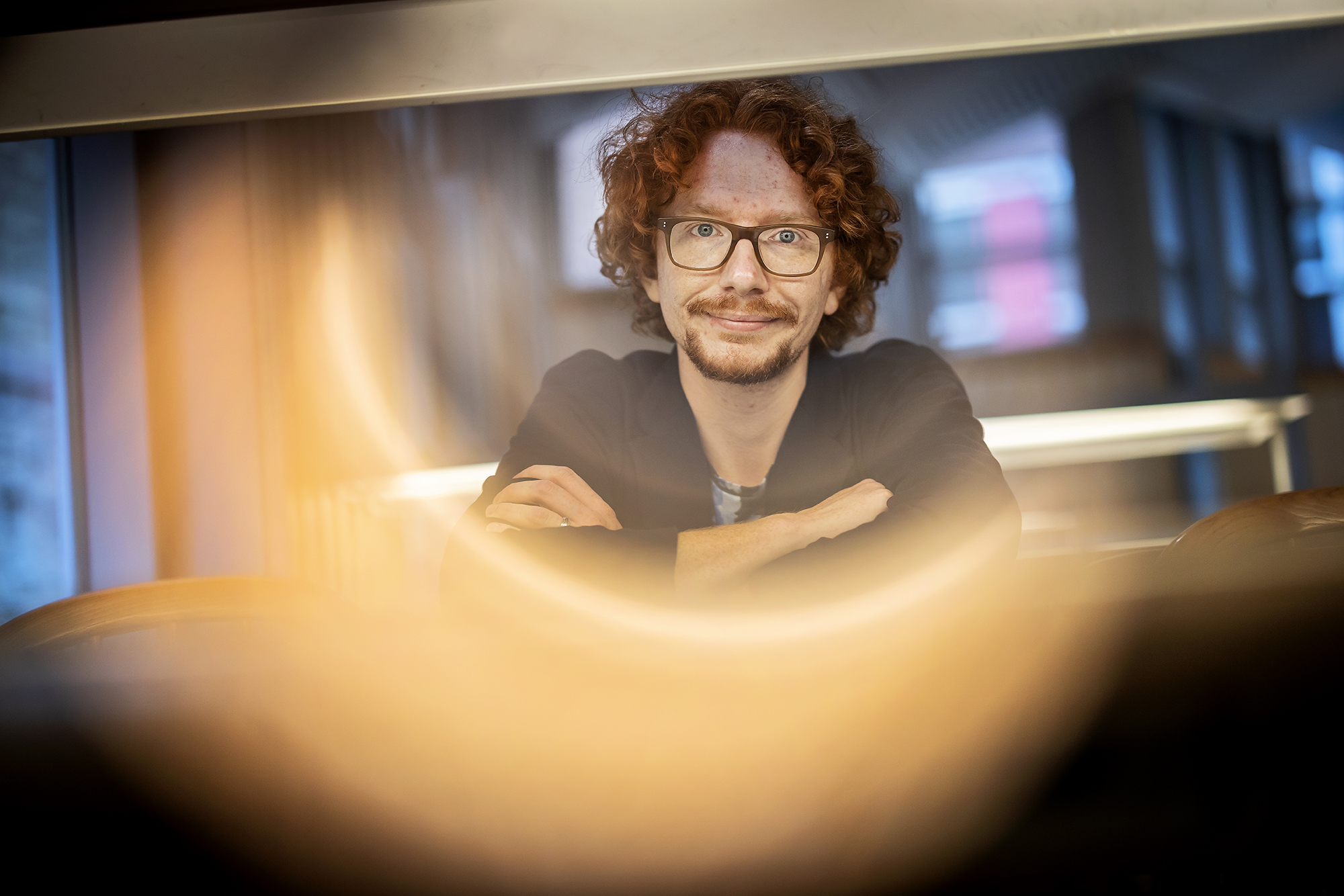
- Who
Growing up in rural Maine, Patrick Carland-Echavarria had a fairly homogeneous upbringing. But all that changed in middle school when his family hosted an exchange student from Tokyo. It was part of a 4-H program that introduced urban Japanese students to rural life. “I don’t think he had ever seen a cow,” says Carland-Echavarria, now an East Asian languages and civilizations Ph.D. candidate in the School of Arts & Sciences. From that experience, Carland-Echavarria was hooked on learning all he could about Japan: studying abroad in Osaka and Kyoto as an undergraduate, teaching English with the JET program in Hokkaido after graduation, and then getting a master’s in Japanese at the University of Massachusetts Amherst.
“I have always wanted to figure out ways to continue my studies of Japan because to stop just felt like I was leaving a puzzle unfinished,” he says.
Working under Stephen D. Miller at UMass, who wrote an anthology on gay literature in Japan, sparked Carland-Echavarria’s current focus on postwar queer cultures and translation, as well as queer art and literature in Japan during the global Cold War. “For queer Americans, Japan in the ’50s, ’60s, and early ’70s was almost a refuge; it was a very strange neutral zone where a lot of expression was possible,” he says.
- What
Carland-Echavarria’s dissertation, provisionally titled “Finding the Rainbow World: Translation, Affect, and U.S.-Japan Queer Literary Exchange in the Early Cold War,” re-examines the English-language translation and subsequent globalization of modern Japanese art and literature in the 1950s and 1960s from a queer and translation studies perspective.
Post-World War II, the two countries became very intertwined with one another politically, militarily, and economically. Yet, Japan never had the religious or legal restrictions against same-sex sexuality that were found all throughout the West, he says.
“If you look at the Edo period, there’s a very long lineage of Samurai love literature and love literature between monks and their acolytes,” Carland-Echavarria says. The 19th century, when Japan modernized, coincided with the rise of sexology, and there was a shift in how homosexuality was viewed but only partially. There was the sense that homosexuality was abnormal, he says, but it wasn’t something that needed to be gotten rid of as long as it stayed in the shadows.
But now, in late capitalism, there’s a lot of overlap in social, familial, and political issues between the two nations.
“Right now, Japan is debating same-sex marriage using very similar rhetoric to the U.S., just remixed a bit to make it more about the traditional Japanese family,” he says.
- Why
Carland-Echavarria wants to shine a light on the writings and art that highlight ways gay men moved through the world and found meaning in their lives and relationships, long before being “out” was even possible. “Gay history didn't begin at Stonewall,” he says. “My research is about readjusting the lenses so you can see things that have been out of focus for so long and see that actually, they are important and can tell us so much that all these traditional Occupation archives aren’t telling us.”
He also sees his research as a way to combat current trends in right-wing discourse. There has been a lot of anxiety in Japan in recent decades about reproduction, gender roles, and same sex marriage. “We’re living in a moment of backlash, but a moment of backlash is not permanent,” he says, and history highlights that. “There’s a rhetoric these days about ‘banning trans kids from existence.’ But you can’t ban a trans person from existence. They will still exist, just like gay people didn't ‘exist’ in Cold War America, or ’50s Japan officially, but they did still exist.”
For those who identify as LGBTQ and are feeling overwhelmed by this backlash and negative headlines, Carland-Echavarria says studying the past can offer a map. “It can help to look to these queer elders and see their resilience. It provides tools for survival; it provides a historical perspective that you need to stay sane.”







